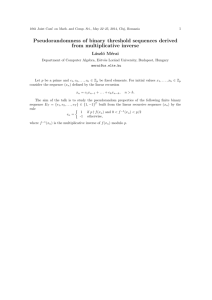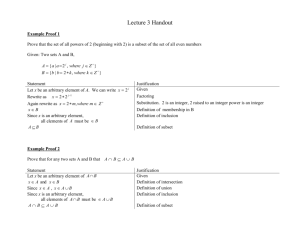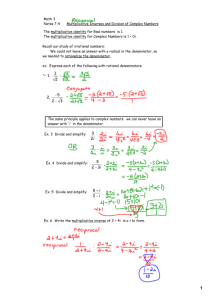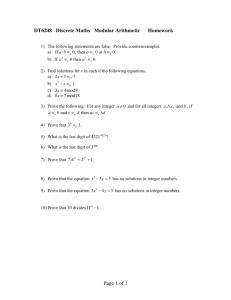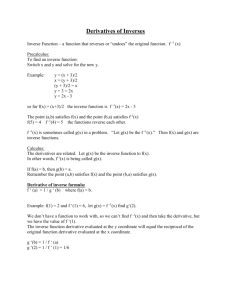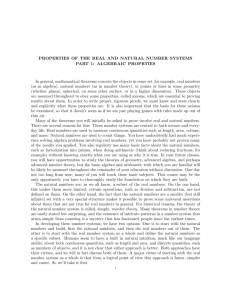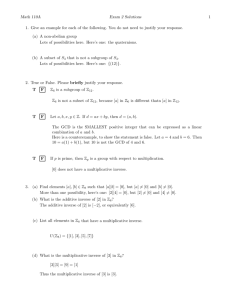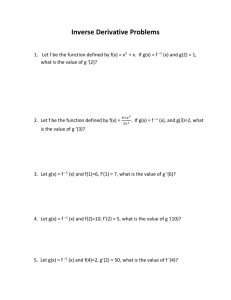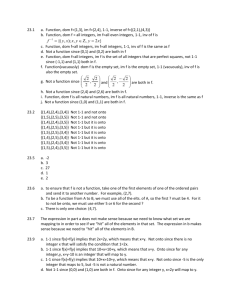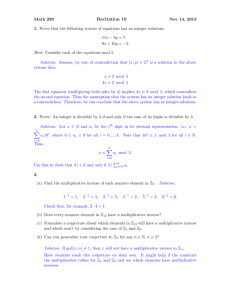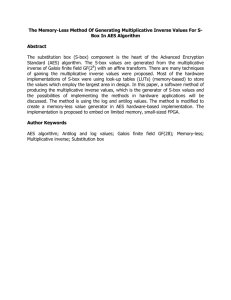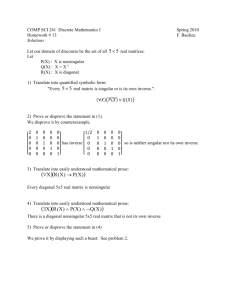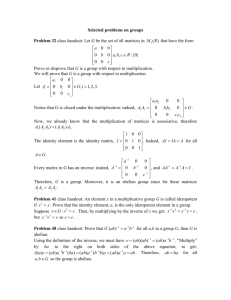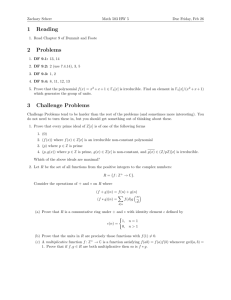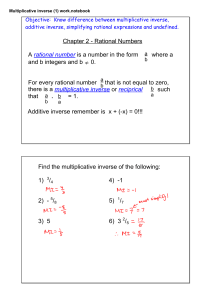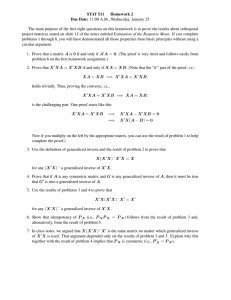some hints for Exercises 3.4
advertisement
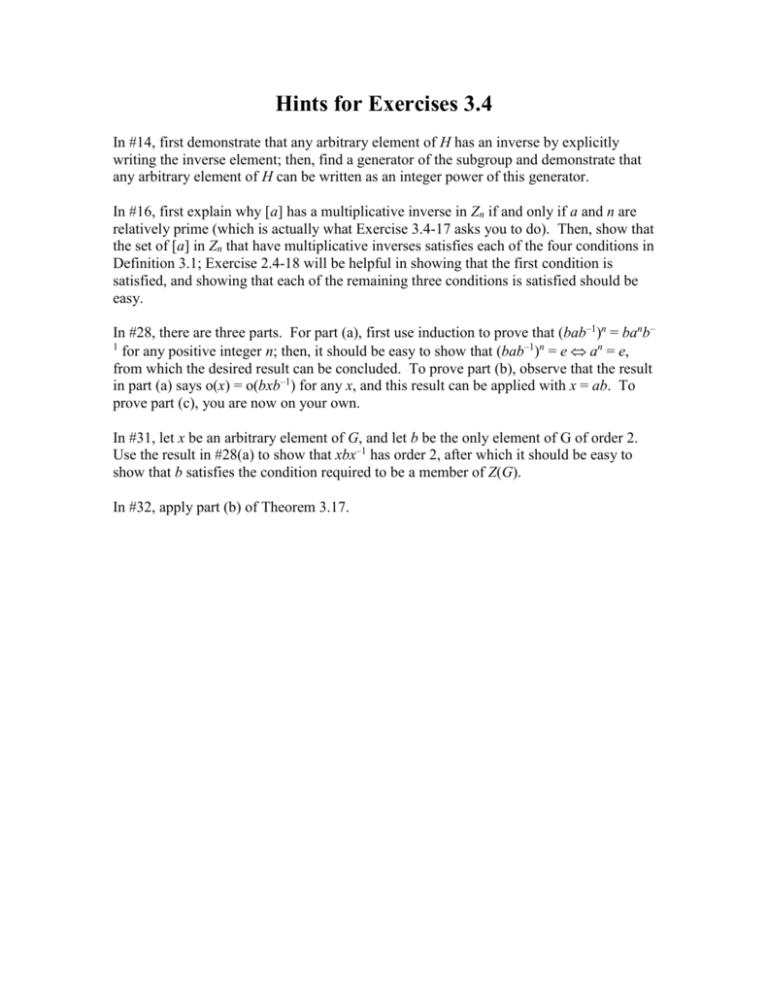
Hints for Exercises 3.4 In #14, first demonstrate that any arbitrary element of H has an inverse by explicitly writing the inverse element; then, find a generator of the subgroup and demonstrate that any arbitrary element of H can be written as an integer power of this generator. In #16, first explain why [a] has a multiplicative inverse in Zn if and only if a and n are relatively prime (which is actually what Exercise 3.4-17 asks you to do). Then, show that the set of [a] in Zn that have multiplicative inverses satisfies each of the four conditions in Definition 3.1; Exercise 2.4-18 will be helpful in showing that the first condition is satisfied, and showing that each of the remaining three conditions is satisfied should be easy. In #28, there are three parts. For part (a), first use induction to prove that (bab–1)n = banb– 1 for any positive integer n; then, it should be easy to show that (bab–1)n = e an = e, from which the desired result can be concluded. To prove part (b), observe that the result in part (a) says o(x) = o(bxb–1) for any x, and this result can be applied with x = ab. To prove part (c), you are now on your own. In #31, let x be an arbitrary element of G, and let b be the only element of G of order 2. Use the result in #28(a) to show that xbx–1 has order 2, after which it should be easy to show that b satisfies the condition required to be a member of Z(G). In #32, apply part (b) of Theorem 3.17.
